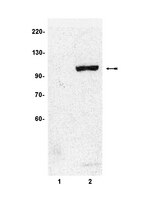Classical and Alternative Activation and Metalloproteinase Expression Occurs in Foam Cell Macrophages in Male and Female ApoE Null Mice in the Absence of T and B Lymphocytes.
Hayes, EM; Tsaousi, A; Di Gregoli, K; Jenkinson, SR; Bond, AR; Johnson, JL; Bevan, L; Thomas, AC; Newby, AC
Frontiers in immunology
5
537
2014
概要を表示する
Rupture of advanced atherosclerotic plaques accounts for most life-threatening myocardial infarctions. Classical (M1) and alternative (M2) macrophage activation could promote atherosclerotic plaque progression and rupture by increasing production of proteases, including matrix metalloproteinases (MMPs). Lymphocyte-derived cytokines may be essential for generating M1 and M2 phenotypes in plaques, although this has not been rigorously tested until now.We validated the expression of M1 markers (iNOS and COX-2) and M2 markers (arginase-1, Ym-1, and CD206) and then measured MMP mRNA levels in mouse macrophages during classical and alternative activation in vitro. We then compared mRNA expression of these genes ex vivo in foam cells from subcutaneous granulomas in fat-fed immune-competent ApoE knockout (KO) and immune-compromised ApoE/Rag-1 double-KO mice, which lack all T and B cells. Furthermore, we performed immunohistochemistry in subcutaneous granulomas and in aortic root and brachiocephalic artery atherosclerotic plaques to measure the extent of M1/M2 marker and MMP protein expression in vivo. Classical activation of mouse macrophages with bacterial lipopolysaccharide in vitro increased MMPs-13, -14, and -25 but decreased MMP-19 and TIMP-2 mRNA expressions. Alternative activation with IL-4 increased MMP-19 expression. Foam cells in subcutaneous granulomas expressed all M1/M2 markers and MMPs at ex vivo mRNA and in vivo protein levels, irrespective of Rag-1 genotype. There were also similar percentages of foam cell macrophages (FCMs) carrying M1/M2 markers and MMPs in atherosclerotic plaques from ApoE KO and ApoE/Rag-1 double-KO mice.Classical and alternative activation leads to distinct MMP expression patterns in mouse macrophages in vitro. M1 and M2 polarization in vivo occurs in the absence of T and B lymphocytes in either granuloma or plaque FCMs. | 25389425
 |
Defective GATA-3 expression in Th2 LCR-deficient mice.
Soo Seok Hwang,Kiwan Kim,Gap Ryol Lee
Biochemical and biophysical research communications
410
2011
概要を表示する
Th2 cell differentiation is critically influenced by transcription factor GATA-3 and by various cis-acting elements including enhancers, silencers and a locus control region (LCR) in the Th2 cytokine locus. Th2 LCR-deficient Th2 cells completely lost the expression of GATA-3 and the phosphorylation of STAT6. Histone 3 lysine 4 (H3-K4) was hypomethylated in the gata3 locus in these cells. GATA-3 and STAT6 bound several regulatory regions in the gata3 locus and transactivated the expression of the gata3 gene. These results suggest that Th2 differentiation program stimulates feed-forward regulation of gata3 gene expression. | 21703230
 |
Cloning of murine Stat6 and human Stat6, Stat proteins that are tyrosine phosphorylated in responses to IL-4 and IL-3 but are not required for mitogenesis.
Quelle, F W, et al.
Mol. Cell. Biol., 15: 3336-43 (1995)
1995
概要を表示する
By searching a database of expressed sequences, we identified a member of the signal transducers and activators of transcription (Stat) family of proteins. Human and murine full-length cDNA clones were obtained and sequenced. The sequence of the human cDNA was identical to the recently published sequence for interleukin-4 (IL-4)-Stat (J. Hou, U. Schindler, W.J. Henzel, T.C. Ho, M. Brasseur, and S. L. McKnight, Science 265:1701-1706, 1994), while the murine Stat6 amino acid and nucleotide sequences were 83 and 84% identical to the human sequences, respectively. Using Stat6-specific antiserum, we demonstrated that Stat6 is rapidly tyrosine phosphorylated following stimulation of appropriate cell lines with IL-4 or IL-3 but is not detectably phosphorylated following stimulation with IL-2, IL-12, or erythropoietin. In contrast, IL-2, IL-3, and erythropoietin induce the tyrosine phosphorylation of Stat5 while IL-12 uniquely induces the tyrosine phosphorylation of Stat4. Inducible tyrosine phosphorylation of Stat6 requires the membrane-distal region of the IL-4 receptor alpha chain. This region of the receptor is not required for cell growth, demonstrating that Stat6 tyrosine phosphorylation does not contribute to mitogenesis. | 7760829
 |
An interleukin-4-induced transcription factor: IL-4 Stat.
Hou, J, et al.
Science, 265: 1701-6 (1994)
1994
概要を表示する
Interleukin-4 (IL-4) is an immunomodulatory cytokine secreted by activated T lymphocytes, basophils, and mast cells. It plays an important role in modulating the balance of T helper (Th) cell subsets, favoring expansion of the Th2 lineage relative to Th1. Imbalance of these T lymphocyte subsets has been implicated in immunological diseases including allergy, inflammation, and autoimmune disease. IL-4 may mediate its biological effects, at least in part, by activating a tyrosine-phosphorylated DNA binding protein. This protein has now been purified and its encoding gene cloned. Examination of the primary amino acid sequence of this protein indicates that it is a member of the signal transducers and activators of transcription (Stat) family of DNA binding proteins, hereby designated IL-4 Stat. Study of the inhibitory activities of phosphotyrosine-containing peptides derived from the intracellular domain of the IL-4 receptor provided evidence for direct coupling of receptor and transcription factor during the IL-4 Stat activation cycle. Such observations indicate that IL-4 Stat has the same functional domain for both receptor coupling and dimerization. | 8085155
 |











